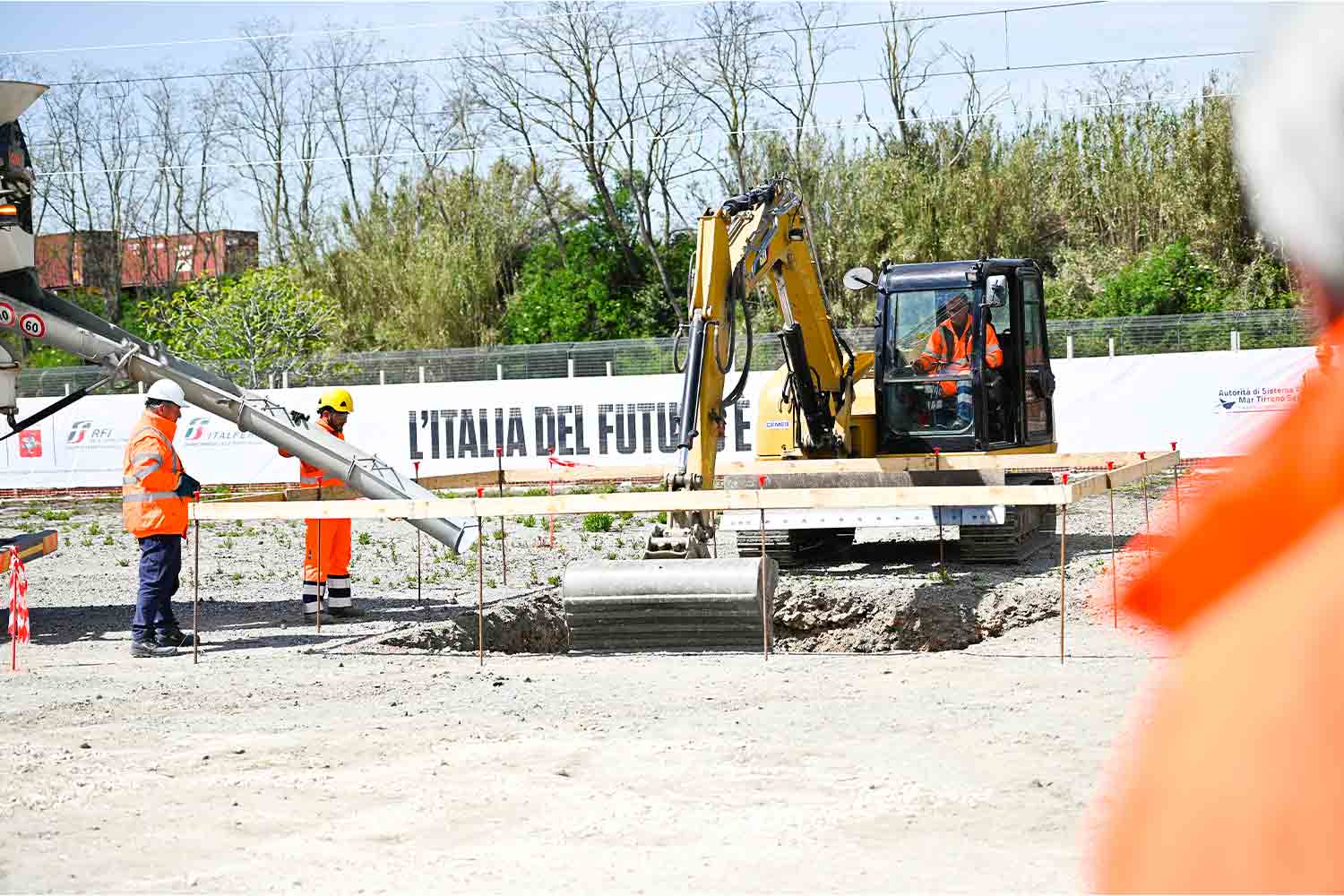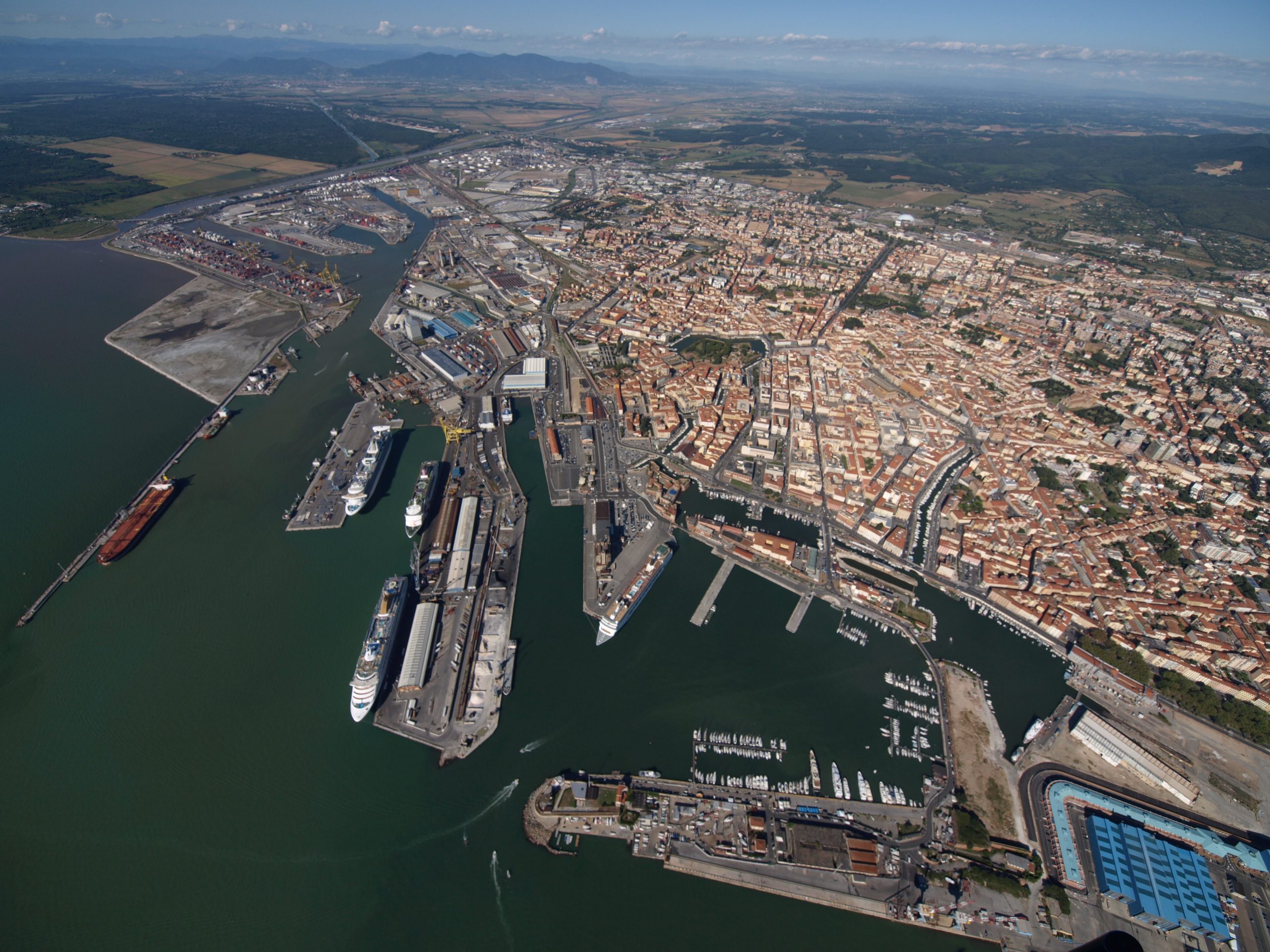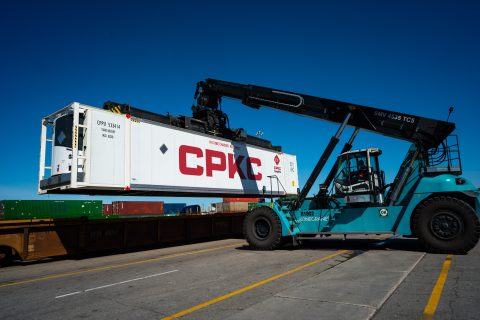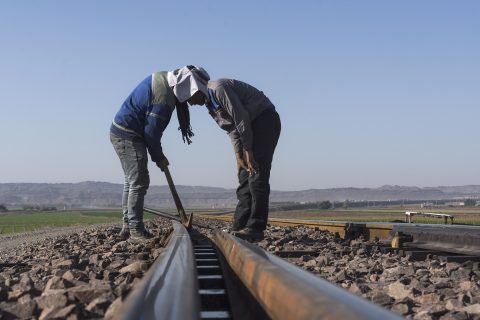Construction of key infrastructure for Scan-Med corridor in Italy started

The port of Livorno, in central western Italy, is getting a stronger rail connection to the Vespucci rail terminal. The project entails the construction of a rail overpass with a length of 350 metres that will avoid interactions with the existing infrastructure. The port of Livorno is a strategic point for the TEN-T Scandinavian-Mediterranean Corridor.
The new link will provide a direct line between the port and the terminal without crossing the Tyrrhenian line, which runs on the Italian west coast from Rome to Genoa. Currently, the Tyrrhenian line separates the port and the terminal, causing delays and bottlenecks. Thanks to the new section and overpass, for which construction has just kicked off, This will thus create a new section only dedicated to rail freight exchanges between the port of Livorno and the Vespucci rail terminal.
The investment for this project revolves around 27 million euros, with 20 of them being financed by the Tuscany Region. The initiative is being carried out by Italy’s national railway holding company Ferrovie dello Stato Italiane (FS). As FS mentioned, the construction was entrusted to Italferr, the company’s consulting and project branch. Moreover, the line will be managed by Rete Ferroviaria Italiana, FS’ subsidiary for infrastructure management.

Livorno as an integral part of the Scan-Med Corridor
The relevance of the port of Livorno lies in the fact that it is the end-point of one of the branches of the TEN-T Scandinavian-Mediterranean Corridor. The Corridor, which starts in Sicily, will have three additional limbs in the Italian territory. The only limb extending west runs from Florence to the port of Livorno, making it an integral part of the corridor. The new connection between the port and the Vespucci rail terminal is not the only initiative intended to boost rail freight at the port.
In August 2022, the Tuscany Region announced further investment to improve rail connections to the port of Livorno for 488 million euros. The projects include a link between the port and the Collesalvetti-Vada line and the profiling of over 40 kilometres of tunnel lines between Prato and Bologna. This line is part of the Pisa-Vada section, which was closed in 1992 and reopened in 2004 specifically to boost intermodal freight transport. Finally, one of the projects is the construction of the Pisa bypass, which will allow for the transit of high-speed freight trains.
The port of Livorno is embracing rail freight
While upgrading the infrastructure, the port of Livorno is also increasing its rail freight volumes. As mentioned by the Italian state press agency ANSA, the Tuscan port moved 2,817 trains in 2022, signalling a 35,8 per cent increase compared to 2021. Similar trends were observed in the so-called comprensorio, the area surrounding the port, where there was a 30,4 per cent increase in freight trains handled. Moreover, container traffic rose by 39 per cent.
The main reason for these figures is the spike in rail transportation of new cars, which increased by 130 per cent compared to 2021. Another increase was registered for forest products moved by rail, which rose by 16 per cent. On the other hand, there was a significant decrease, 77 per cent to be precise, in bulk goods loaded on the trains at the port of Livorno.

Also read:





Each separate mode, by sea, by air, etc., etc. now has to be with spare capacity, for future added market demand, etc.
Currently, with other modes (all) redundant, all over, upgrading precedes – for added load.
For Edge of railways (weight…) however, now single option is longer trains.
Utilisation of vast assets within railway is obstructed. Even worse shortcomings within railways now is advocated Excuse for extra, “steering” upon clients of alternative…
Goal of EU calls – for a shift!…